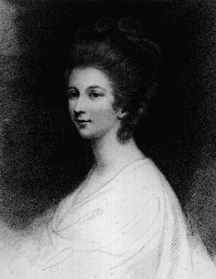
Henrietta by Charlotte_Lennox (1758)
editPlot summary
editIn Charlotte Lennox’s novella Henrietta, we are shown the difficult and dangerous time period for young women in the eighteenth century, trying to assert their independence. Henrietta sets off to the city against her family’s wishes because of her principles and desire to be happy. Henrietta is a bildungsroman, or a novel of education. This is important to the character Henrietta, as she is young and naive. She easily trust strangers and quickly learns the ways of the world, when her newly acquainted friend sends her off to the city and Henrietta finds herself in the hands of the wrong person.
Characters
editMs. Woodby: Quick to become Henrietta’s “violent” friend, she is an older, more experienced woman who is entertained by the French amatory novels of the time. She has led a comfortable life and is seeking entertainment. For instance she begins calling Henrietta Clelia and asks to be called Celinda. Ms. Woodby marries a young “red-coat” a week after they had met and states this is because he would have “stabbed himself” had she delayed his happiness.
Mrs. Autumn: She is egocentric and desires to be pleased and flattered. Mrs. Autumn is much older but acts as if she is younger. This is poignant to her name being Autumn, representing age and harvest, but her behavior being spring like, youthful and foolish. Henrietta and Mrs. Autumn begin to quarrel about Henrietta keeping Mrs. Autumn's behavior to herself and Henrietta not wanting any part of becoming like Mrs. Autumn.
Miss Belmour: A romanticized woman who is caught up in a triste and flees to France with Henrietta by her side. Her name evokes beauty and love. She is hesitant to have Henrietta seen as her servant and asks Henrietta to represent herself as her companion.
Structure
editThe novella Henrietta, by Charlotte Lennox is a in two volumes and is one of the very first readings to include chapters. The first volume depicts Henrietta and her reason to flee her aunts and sets up the principles which guide her as a young woman. The second volume tells her tale of becoming a servant, displaying her attitudes and principles once again. It is fashioned in the traditional bildungsroman, meaning a "novel of formation". The subject of these novels is the development of the protagonist's mind and character, in the passage from childhood through varied experiences- and often through a spiritual crisis[1]” (255). Each chapter has a significant participation to the development of Henrietta's character.
Theme
editThe theme of the novella is character development and independence. Lennox uses many different characters , each with his or her very distinctive trait. This is critical to Henrietta's development, as her learned principles guide her interaction and choices she makes in the novella. Henrietta's inexperience puts her in some predicaments as she strives toward becoming an independent young woman. For example, she does not clarify the address with her new friend, Ms. Woodby, before going off to the city to stay with a stranger. It works out in her favor and she is not in harms way with Ms. Eccles, but it served as a lesson to Henrietta.
Style
editThe novella is amatory fiction. It uses an idea of romance and relationships to build characters and the plot. In the beginning, Lennox tells us Henrietta leaves the comfort of her aunt's because they want her to have an arranged marriage and she wants to marry for love. Her pitfalls and successes give Henrietta likability and show how her character is relatable to others. Henrietta is the heroine and the reader wants her to succeed and find true love.
Overview
editCharlotte Lennox wrote the novella using a narrative that guided the reader to understand Henrietta's feelings by using small interjections within the text. For example, Lennox adds feeling to Miss. Willis' words so we have the implication they had on Henrietta. "She uttered these words with extreme earnestness and concern and went immediately downstairs, leaving Henrietta in an agony of doubt, anxiety, and astonishment"[2](234). By doing so, Lennox creates tension and an element of suspense. The novella has many suspenseful moments and ends in a pleasing manner, satisfying the readers quest for romance.
- ^ "A Glossary of Literary Terms, 10th Edition - M.H. Abrams | Geoffrey Harpham - 978-0495898023". www.cengage.com. Retrieved 2015-10-27.
- ^ Lennox, Charlotte (1761). Henrietta Volume 1. Oxford University: A. Millar. p. 234.
